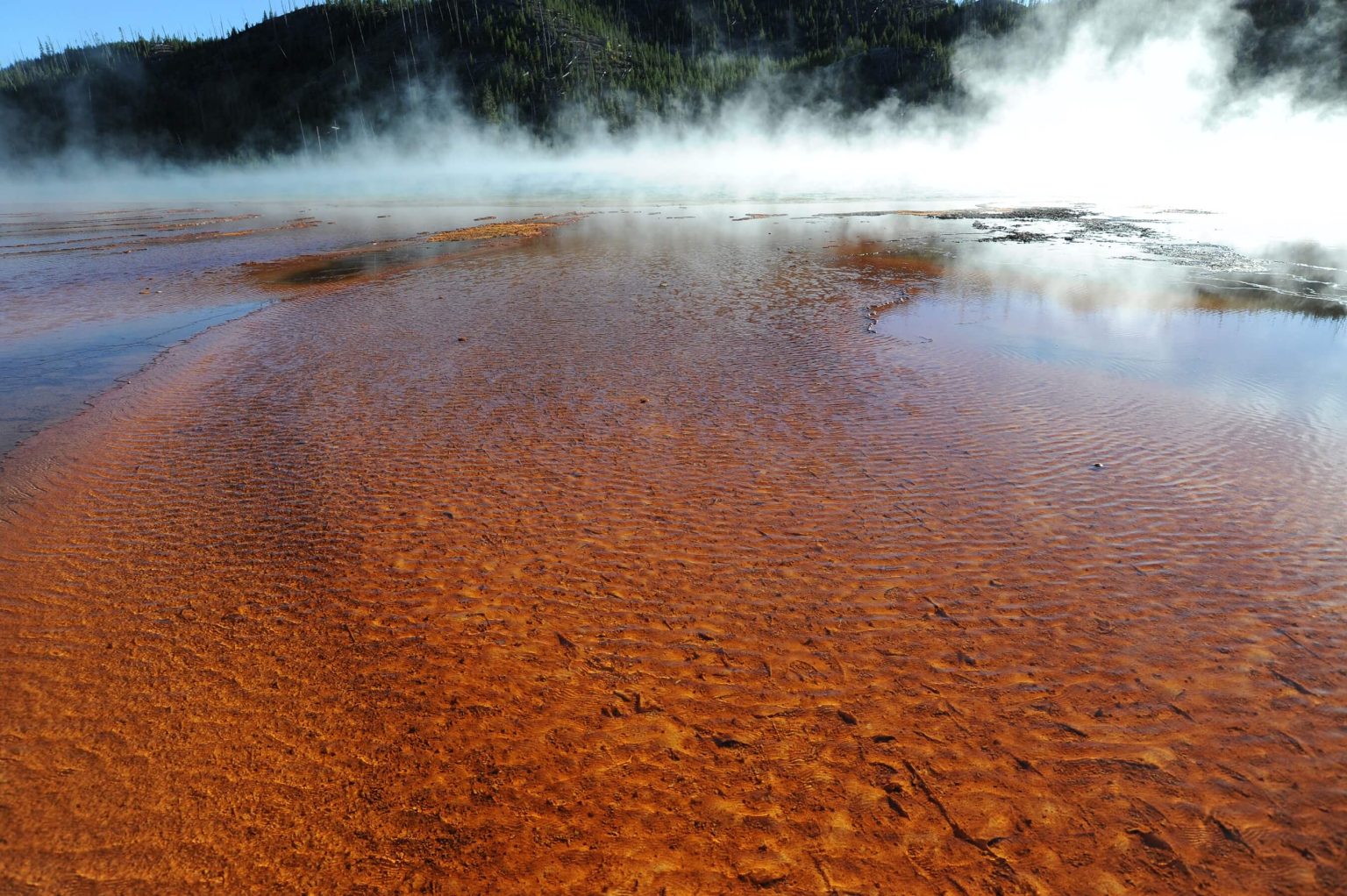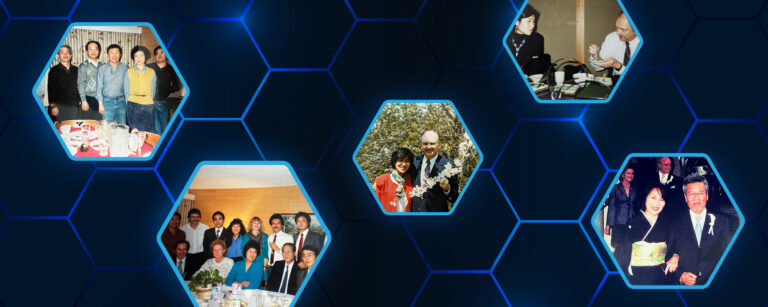People from all over the world have fond memories of visiting Yellowstone National Park. A rich area of natural beauty, diverse wildlife and numerous photo opportunities, Yellowstone has something for people of all ages, backgrounds and interests. INL Energy & Environment Science & Technology (EES&T) employee Vicki Thompson is no exception. A longtime lover of Yellowstone, Thompson fondly recalls receiving View Masters of Yellowstone from her aunt and uncle when she was younger, and spending her honeymoon soaking up the beauty of the national park. But Thompson discovered something else in the park as well: a host of thermophillic bacteria containing enzymes that break down biomass.
With 48 U.S. patents to her name, Thompson is a highly accomplished researcher and inventor, having made important discoveries within the fields of medicine, environment, energy and forensics, to name just a few. Thompson describes her research as “extremely varied. The overall theme of my research is using my training to solve industrial problems.” Thompson was the 2015 recipient of INL’s Inventor of the Year award, in addition to an already impressive array of accolades that include three Research & Development (R&D) 100 Awards.
Two of those R&D 100 Awards resulted from the research Thompson conducted in Yellowstone National Park. Her first foray into the park led to the discovery of an organism called Thermus brockianus, which grows at high temperatures and a pH of around 8-10, and contains an enzyme called catalase.
“Catalase breaks down hydrogen peroxide by turning it into water and oxygen,” Thompson explained. This catalase is especially useful for the fabric and paper industries, which use hydrogen peroxide as a bleaching agent. However, at the end of the bleaching process, there is excess hydrogen peroxide at high temperatures that must be broken down. Industrial catalases are too fragile to operate at these high temperatures.
“You can dilute or use chemicals to break down hydrogen peroxide, but then you’re solving a chemical problem by using more chemicals. So neither method is ideal,” Thompson said. “But we found this organism that made a catalase that could operate almost up to the boiling point of water. Thus, it could be incredibly stable for well over two months under the conditions that the fabric and paper industries use. Using the catalase is very relevant to industry, because it reduces the cost of this bleaching process and makes it more efficient.”
Thermus brockianus was not the only useful organism Thompson found during her research at Yellowstone. “Processing of biomass has similar problems to the breakdown of hydrogen peroxide; it’s done at a high temperature, as well as a low pH,” Thompson explained. “We went into Yellowstone to find an organism that could survive at high temperatures and low pH to see if it could produce the enzymes necessary to break down biomass.”

Her team was successful in this endeavor as well. They located an organism called Alicyclobacillus acidocaldarius, which grows optimally at pH levels of 2 or 3 and temperatures between 60 and 70 degrees Celsius (140 to 160 degrees Fahrenheit). Within this organism, Thompson, co-leading with her INL colleague and husband David Thompson, and their team discovered an enzyme that was effective at breaking down biomass. This enzyme was a dual endoglucanase/endoxylanase, referred to colloquially as “Xtreme Xylanase” or “XX,” because of its ability to operate effectively under extreme conditions. XX successfully breaks down both cellulose and hemicellulose – the sugar polymer components of biomass.
After Thompson’s team won an R&D 100 Award for their role in the discovery of XX, the project received the attention of venture capital companies. As Thompson described, “At this time, oil and gas prices were up, and so people were looking at biofuels as an alternative. We got a lot of people interested in investing with us.”
A company called Xtreme Biochemicals ended up funding Thompson’s team through a Cooperative Research and Development Act (CRADA) Project to further develop XX and learn what other enzymes the Alicyclobacillus organism could produce. Through this research, they discovered the other ten enzymes, three of which broke down the cellulose component of biomass. The others successfully broke down the hemicellulose component, which, according to Thompson, is a much more difficult feat. Hemicellulose is a highly complicated polymer, composed of a chain of sugars with other sugar branches and pieces attached, whereas cellulose is simply a straight chain of glucose molecules that is easier to break down. The ultimate goal of these enzymes is to return cellulose and hemicellulose to their simplest form: glucose and xylose, which can then be fermented into biofuels.
In addition to her research on Yellowstone’s native microorganisms, Thompson has conducted research with important medical and forensic implications.
“As a graduate student, I worked on a bioreactor system to grow particular plant cells that produced anti-cancer agents,” Thompson stated. “The problem with plant cells is that they only produce these anti-cancer chemicals when they’re in a certain stage of growth, and it’s hard to keep them in that stage of growth.” Thompson developed a system for holding the plant cells, which was composed of a column with liquid in it. A magnetic field is then placed around the column, which holds the cells in position and allows the researchers to get them into the optimal stage of growth for producing anti-cancer agents. The cells are then harvested from the top down, so the researchers are always harvesting the cells with the highest number of anti-cancer agents. The first two patents Thompson received were related to this project.
When Thompson first arrived at INL, she worked on an antibody profiling project. She had already learned how to use and make antibodies through postdoctoral research at the U.S. Department of Agriculture (USDA), but she led INL to crucial discoveries related to the importance of antibodies in forensic analysis.
“Through my mentor at USDA, I learned how to use antibodies to test for different kinds of chemicals,” Thompson said. “When I got to INL from USDA, I was looking for ways to use that kind of knowledge. There was an initiative at the lab to develop forensic technologies, in particular looking at DNA. At the time, DNA was very expensive and slow. They were looking for faster and cheaper alternatives to DNA, which ended up being made possible through antibody profiling.”
Thompson worked with a small company in California that had developed the initial method of antibody profiling, based on the discovery that a particular group of antibodies called autoantibodies are, like DNA, unique to each individual. “This company developed a method where we could pull those antibodies out and read them. They come out with a kind of bar code pattern of lines that is unique to each person, and was thus a way to identify somebody without using DNA,” Thompson explained. “You could get the test results back in a few hours, compared to DNA, which could take weeks or months.” Thompson worked with the company to adapt their antibody profiling method to forensic applications by making it more robust, more sensitive and ready for use in the field.
Throughout her career at INL, Thompson has learned to adapt, and she is willing to take on projects that relate in any way to any aspect of her research. To aspiring scientists, researchers and inventors, Thompson advises, “Find something that you really enjoy and figure out how to make it applicable to someone else.”






